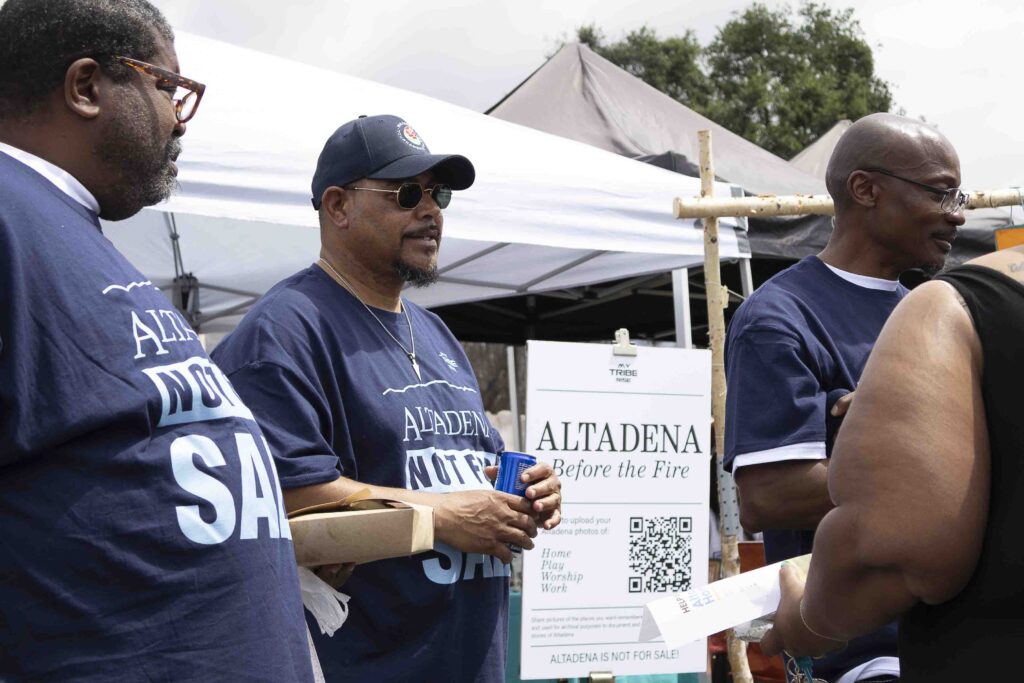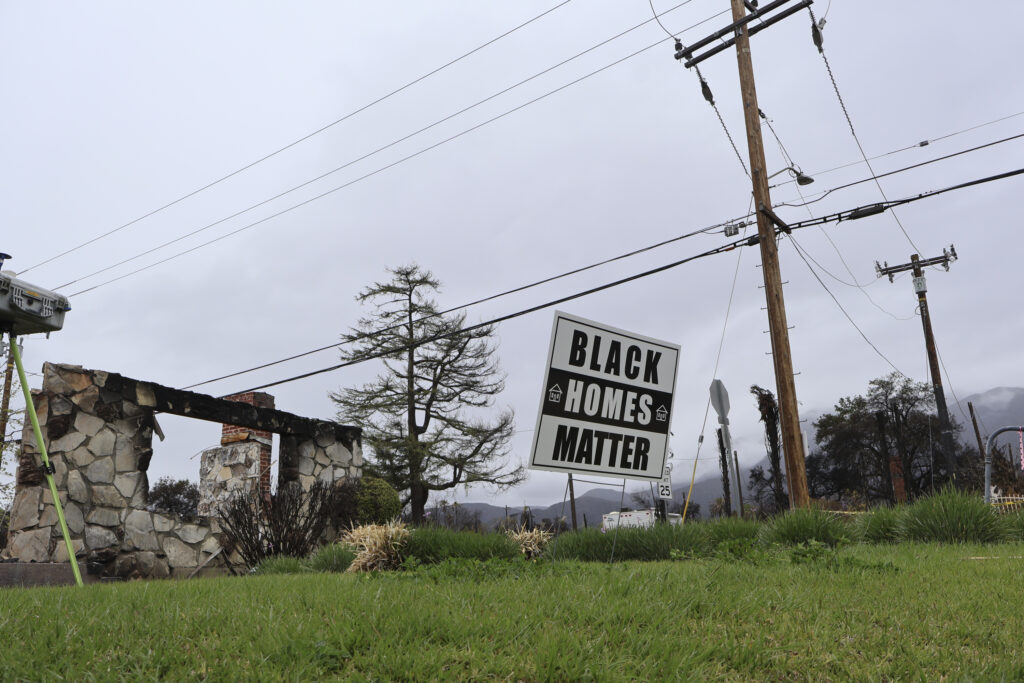In Altadena, neighbors become first responders
Staring into the bonfire warming the wet, misty morning air outside of his North Pasadena home, Jorge Trujillo recalled the morning when everything changed for him and for tens of thousands of Altadena and Pasadena residents.
His eyes darted back and forth over the flames as the fear from that day crept up into his voice. He’s a commanding presence, tough but kind, and a little rough around the edges. But the fires that day were bigger than any one person’s strength. Even a man like him, steady and unshakable, couldn’t help but feel small against the force of it.
“I never felt so little in my life when I was there. It was all pitch black,” he said. “And I don’t know, I just felt like man, this is evil. Like, this is the devil, that’s what I thought. Like, I guess we’re going to work today with the devil.”
Trujillo relives the morning of Jan. 8 every day as he drives through the ruins of a town that now exists only as a ghost of its former self, after the Eaton fire destroyed more than 9,000 structures and killed 18 people. Once a thriving hub of culture and economic progress for its Black and Brown residents, who made up the majority of Altadena’s nearly 43,000 people, it is now street after street of charred debris and burned-out cars, with the occasional chimney rising above the treeline — the last recognizable remnant of what once was.
Like many Altadena residents, Trujillo and his family have been living in the area for generations. His friends in the neighborhood are people he’s known since high school or before. Trujillo’s deep love for his community is what inspired him to jump in when official fire and rescue lagged behind.
“There was no one around. It was like a scary movie. There’s no one there to help you,” he said.
Trujillo held the flames back for hours before help arrived. Eventually, some of his friends and family jumped in to help, but Trujillo said fire crews wouldn’t arrive until 9 or 10 a.m. — nearly 14 hours after a spark in Eaton Canyon was first reported. Despite evacuation orders, which for many came too late, some residents stayed behind to protect their homes.
“My family’s here. We never left,” Trujillo explained. “We were part of the evacuation plan, we just chose not to listen. We don’t listen.”
Now reduced to rubble, those single-family, working-class Altadena homes were the key to generational wealth. In Altadena, homeownership before the fire was almost double the national average for Black and Brown families, according to LAist. Now many of those families are without a backup plan.
“You know, when you sit there and really analyze that, a lot of them are not coming back,” said Damon Moore, an Altadena local and member of the community organization Altadena Not for Sale. “They can’t afford it.”
Already, investment firms are looking to buy the valuable Southern California real estate, and the residents are struggling to survive the financial and emotional strain of the past several months.
“We have to deal with reality,” Moore said. “But that doesn’t mean giving up. It means getting creative, working together, and fighting for what’s ours.”
Victor Hodgson of My Tribe Rise, which has been active in the community since 2019, echoed the sentiment.
“The history of Altadena was that, you know, certain areas in Pasadena — Blacks couldn’t drive through, but there’s this one place in Altadena where they could,” Hodgson said. “We’ve been here doing the work, helping people with housing, helping the home. Now, when the fires hit, we teamed up with others to help people find temporary housing and later permanent residence.”
The fire that ravaged Altadena has exposed cracks in a system meant to support the community in times of crisis. Anthony McFarland, pastor at Lift International Church in Altadena, described the rebuilding effort as a long-term project.
“The reality is, this will be a five to seven year process,” he said. “It’s important that we be on one accord and we have a plan.”
Yet, that plan comes with its own set of challenges. McFarland is quick to clarify misconceptions surrounding debris removal efforts.
“There are ads saying that the Army Corps of Engineers will remove debris for free,” he said. “That is not true. They are only doing a certain amount of debris removal. Homeowners will need additional services to remove other debris, like concrete and bushes, plus soil tests before any rebuilding can even start.”
Altadena residents may be up against the greatest challenge they’ve ever experienced, but they’re also uniquely qualified to meet the moment. Through pop-up mutual aid sites, block parties, rallies and just some backyard barbeques, Altadena has shown they know how to show up for each other, and that community is more than people living together in a neighborhood.
“Home isn’t always a house,” Trujillo said. “It’s where your friends are, your people, your family. And we’re here. That’s what we want to come through.”





